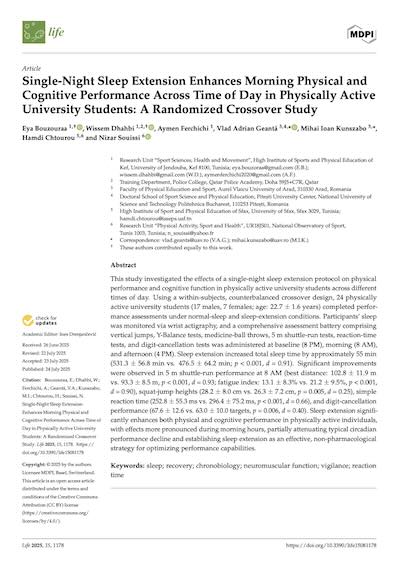Today's article comes from the journal of Life. The authors are Bouzouraa et al., from the University of Jendouba, in Tunisia. In this study they're asking if getting just a single extra hour of sleep can significantly affect your cognitive and physical performance.
DOI: 10.3390/life15081178


You must be an active Journal Club member to access this content. If you're already a member, click the blue button to login. If you're not a member yet, click the sign-up button to get started.
Login to My Account
Sign Up